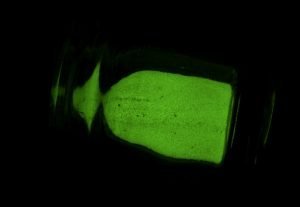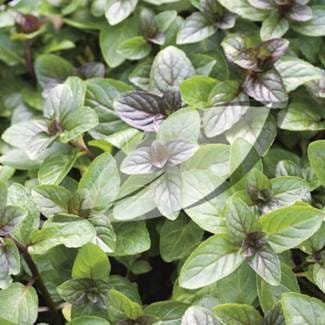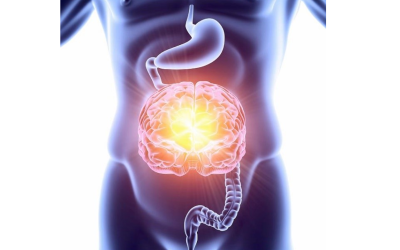Archetypes and Archetypal Images
Plants are living organisms and all living things, plant and animal, are ensouled. Accordingly, the essential oil is the carrier of the most concentrated portion of the plant’s soul essence. In this reference, anthroposophy founder Rudolf Steiner states: “Matter is most spiritual in the perfume of the plant. When the spirit most closely approaches the physical earth, then we have the perception of fragrance.”
The “I” is the unique, immortal aspect of the soul which journeys through the cycle of birth, death, and rebirth. It carries with it the “DNA” of past life qualities and brings them to the portal of rebirth where it picks up new ones.The “I” is core of being. It is that which is aware. Its full assertion is required for the potential to achieve wholeness of being via engagement in soul-to-soul relationships with people, animals, plants, essential oils and all the other inspirited elements of the natural universe.
In the journey through the cycle of birth, death and rebirth, as well as through genetic transfer and the constitutional adaptations that take place as we stray from the realm of the true self into the arena of the manufactured survival personality, the “I” acquires, or activates, a unique collection of archetypal components.
In Spiritual PhytoEssencing, the term archetype refers to a unique intangible construct of the soul that generates a pattern of characteristic potentials which, when activated, manifest during a person’s lifetime as physical and psychospiritual qualities and propensities. Archetypes are non-material and cannot be accessed by ordinary consciousness. Essentially, they are spirit-world forms which generate tangible substances and expressions in living beings.
Accordingly, particular identifiable patterns of emotions and physical predispositions can be viewed as outward expressions of these underlying soul archetypal components. In other words, these outward expressions are “archetypal images” of specific underlying archetypes which, like an atom’s electrons, have come to orbit around the nucleus of the “I.”
Mineral Archetypes
All plants and animals contain a broad spectrum of minerals which are not only fundamental components of the fabric of their tissues, but are also essential for the operations of all their physiological functions. The various mineral components of both plants and humans, such as calcium, magnesium, phosphorous, etc., also serve as soul-level archetypes that generate characteristic archetypal modes.
An archetypal mode (a type of archetypal image projected by an underlying soul archetype) is a specific combination of perceptual filters employed by the ego (the outermost part of the self-structure that engages with the world and, in most people, dominates everyday consciousness),which determines the specific psychosocial role that the ego then activates in relation to particular everyday experiences. Archetypal modes are essentially a combination of behavioral and reactional tendencies.
These same minerals play a major role in a plant’s behavior (e.g., growth and reproductive patterns; relations with other plant species and insects), and the psychospiritual properties of its essential oil.
Peppermint and the Phosphorus Archetype
Peppermint, a phosphorus-rich herb, has a strong relationship with the phosphorus archetype. While peppermint is a good source of other minerals as well (e.g., magnesium), its phosphorous content exerts a uniquely powerful influence upon its soul-nature.
Phosphorus, found in every cell, is the second most abundant mineral in the body (calcium is the most abundant). Phosphorus is involved in every biochemical reaction; and in many of these, it works in tandem with calcium. The bones contain a higher proportion of calcium than phosphorus, but the opposite is true of the soft tissues. The proper balance of calcium: phosphorus is required for the effective operation of both of these minerals in the body. Phosphorus is also required for normal skeletal development, kidney functioning and nerve-impulse transmission. Phospholipids (e.g., lecithin) are required for: efficient nerve and mental activity; transport and utilization of fats; maintenance of acid: alkaline balance; and glandular secretion of hormones.

Image credit: I, Luc Viatour
CC BY-SA 3.0
The name phosphorus is derived from a Greek word meaning bearer of light. From the anthroposophical perspective (anthroposophy is a system of natural and spiritual science founded at the end of the19th century by Rudolf Steiner), phosphorus, relative to the human organism, is literally a bearer of light. The luminosity of white phosphorus, which actually glows in the dark, can be ignited merely through contact with air. However, it’s very unstable and turns from white to yellow to red when exposed to light. By virtue of this low threshold of activation, phosphorus is very reactive and combines easily with other elements. This ease of combination helps to explain the phosphorus individual’s easy sociability and attractiveness to potential partners.
Phosphorus is the bearer of both light and spirit in that light has a spiritual nature and is thus closely related to the higher soul. In the Kabbalah, light is frequently used as a metaphor for the emanations of the Infinite which are sometimes referred to as the Or Ein Sof, or the Infinite Light.
From the homeopathic perspective, the theme of communication is the essence of phosphorus. Accordingly, the phosphorus type is very open to the exchange of thoughts and feelings, sometimes to the point of experiencing blurring of identity. The phosphorus individual has a strong desire for company, wants to hear the ideas of others and have her own heard as well. Ultimately, however, as she gets older and life has taken its toll on her nervous system, this type becomes depleted by company and may become indifferent to acquaintances and the endless stream of family dramas.
This penchant for open communication renders the phosphorus type very sympathetic. In fact, being sympathetic is one of the keynote qualities of phosphorus. Given the instability of phosphorus, this expression of sympathy is unstable and tends to shift from one person to another as new situations arise. This same phenomenon is characteristic of the phosphorus type’s fear of disease. Typically, she’s easily frightened by the prospect of disease, and upon reading about the symptoms of one disease or another, is prone to suspecting that she is suffering from the disease in question. However, she is readily reassured by a doctor’s assessment to the contrary only to imagine she is suffering from another disorder as soon as he hears, or reads about, the details of it.
The phosphorus type is very friendly, communication flows naturally from her and she may consider someone a friend even though she has just met that person. This, of course, makes her particularly vulnerable to disappointment and victimization. The phosphorus type may also be subject to homesickness. It’s not so much that she misses a place, but rather, the contact with neighbors and friends with whom she shares open, comforting communications. Similarly, when she breaks up with a love interest, she is despondent, not so much because of the loss of romantic passion as of the loss of the ongoing communication established through intimacy and continual contact.
The theme of communication also underlies the phosphorus type’s tendency to learn primarily through language via talking, listening, reading and writing. Thus, in the failed state of phosphorus, many of the symptoms experienced, such as mental exhaustion, confusion, indifference, lightheadedness, etc., are associated with a breakdown in the ability to think or learn through these language-driven activities.
The phosphorus type has a strong desire to experience new things, to discover and acquire knowledge and insight. Hence, when young and healthy, there is a desire to travel so as to experience different cultures, and ultimately, to communicate with different, interesting people from whom one can learn and grow. On the other hand, if interesting people and experiences are not readily available, the phosphorus type will become quickly bored with a trip and fall into a complaining, irascible temper.
This penchant for travel is a derivative of the phosphorus type’s constitutional nervous restlessness. There is a continuous need to grow, experience and communicate, and if these are inhibited, the phosphorus type is readily disenchanted, edgy and agitated by a steady diet of the ordinary. Hence, she is subject to restless thoughts and elaborate fantasies. She has a fertile imagination which works for her in her creative undertakings, but also, serves to make her subject to fears and trepidations, most prominently concerning disease and death. The phosphorus type is jumpy, easily startled from sleep and may have a diverse portfolio of fears, including fear of being alone, of the dark, of thunder, and of what the future might bring.
It has been my experience that individuals who have an affinity for the homeopathic remedy Phosphorus — prepared from a saturated solution of phosphorus — commonly have a similarly strong, constitutional affinity for peppermint oil. In other words, many of the qualities and reactional tendencies associated with the phosphorus type are similarly associated with those who have a deep constitutional affinity for peppermint oil.
This is not to say that peppermint oil is a substitute in clinical practice for the remedy Phosphorus, and vice versa. Instead, they act synergistically, and for our purposes, this relationship enables us to use relevant portions of the Phosphorus picture to more fully elaborate our understanding of the peppermint individual.
In this reference, the following Phosphorus qualities and symptoms are important: too open, bright, excitable; quick perception; impressionable; sensitive to all external impressions; suggestible; startles easily; full of fears and anxieties; anxious; anxious when alone; fear of: death, disease, the dark, ghosts, robbers, insects, the future (that something bad will happen); gullible; affectionate, returns affection; sympathetic; clairvoyant [out of body experiences); desires to be magnetized (i.e., to be emotionally inspired and spiritually vitalized); spacey; easily distracted; apathetic; apathy alternating with anger; great irascibility; easily vexed, which makes him exceedingly vehement, for which he suffers as a result; misanthropy; great flow of incongruous ideas; melancholy; sadness; disgust for life; mental exhaustion; worse when alone; falls asleep late; excitability keeps him awake at night; complaints prevent sleep; talks in sleep; unrefreshing sleep; frequent waking with difficulty falling asleep again; starts with fright from sleep; anxious, distressing, lascivious, frightful or horrible dreams; (The peppermint type may either be a good or a poor sleeper, or experience an alternating pattern of periods of deep-sleep interspersed with periods of poor-sleep and insomnia.); debility and exhausted states; always tired, always wants to rest; generally chilly but may be warm-blooded [I have found that the peppermint type has a type of body temperature instability in that he is generally chilly but is prone to rapid overheating); great sensitivity to odors; chemical sensitivity; quickly prostrated by unpleasant impressions.
The following qualities and symptoms from the composite peppermint oil picture (elaborated in the Peppermint Oil chapter in Berkowsky’s Synthesis Materia Medica/Spiritualis of Essential Oils from peppermint’s plant characteristics, folkloric associations, herbal medicine uses and the symptom pictures of the homeopathic remedies Mentha piperita and Menthol) are relevant in reference to the Phosphorus symptom picture: strengthens the nerves, digestion and the heart muscles; exerts a sedative action which makes it suitable in cases of digestive debility, fever, fatigue, etc. which are accompanied by nervousness, restlessness and/or insomnia; anger; depression; hysteria; insanity; low self-esteem; intolerance; mental fatigue; poor concentration; enervation; racing thoughts; nervous trembling; eager to work; dispatches work quickly; confusion; insomnia; vertigo; neuralgia; chilliness; dizzy spells accompanied by chilliness and pallid complexion; weakness of the nerves and exhaustion caused by protracted illness; lymphatic congestion and stagnation; nervous headache.
One of the main feelings of Phosphorus is the perception that she is unloved and insufficiently cared for. In general, the Phosphorus type will compensate for this perception by being affectionate and compassionate in the hope that this will elicit a reciprocal display of caring and affection. One of the most important keynotes of Phosphorus is that she has a coequal desire to give and receive love.
The Phosphorus type is very sensitive not only to others and their needs but to all environmental and other external (e.g., those around them, accounts of human suffering, bad news, etc.) influences as well. She is very emotional, reactive and animated, and tends to attract attention toward herself either because of her sympathetic- or lively personality. The Phosphorus woman is likely to be a stylish dresser, graceful and have natural charm. Yet, the liveliness and gracious friendliness often veil an underlying feeling of deprivation regarding the receipt of love and affection. In turn, this feeling can give rise to chronic irascibility, easy vexation, melancholy and feelings of insecurity.
The Phosphorus child who does not receive adequate attention and caring at home is likely to compensate by making a lot of friends outside the home, being popular in school, etc. However, these relationships tend to lack substance and intimacy, because she’s closely guarded about the inadequacies of her family relationships as this is a source of hurt and shame.
The lively animation of Phosphorus also fuels her darker emotions, such as restlessness, anger, anxiety, fearfulness and hypersensitivity. When she’s young, her characteristic restlessness may manifest as a strong desire for company—a need to get out of the home where she feels isolated and unappreciated. As she gets older and her hypersensitivity and gullibility have taken their toll, she can become exhausted, debilitated, and haggard-looking, and crave shelter form the storm, even to the point of becoming somewhat agoraphobic.
Another central theme of Phosphorus involves a lack of personal boundaries. Her hypersensitivity, empathy and impressionability encourage her to experience the world with the innocence and vibrant immediacy of a young child. She may have a perceptible child-like quality, or she may feel — regardless of her age — that she has still not achieved emotional maturity. Her mind/body boundaries are readily breached by both pleasant and unpleasant impressions.
Though gifted with quick perception and clairvoyance, she is prone to mistaking wishful thinking for true intuition and to be led astray by this error. Hence, her intuition is not consistently reliable because it’s likely to be distorted by a swirling palette of emotions and imaginings. The innocent and trusting nature of Phosphorus can get her into all manner of uncomfortable situations. In fact, one will commonly find the Phosphorus type’s history to be checkered with mishaps and narrowly-avoided disasters. The Phosphorus type is both a “cockeyed optimist” and an apprehensive alarmist. She is quick to jump to conclusions based upon scanty or circumstantial evidence and interpret the facts of a situation through the prism of her own subjective experiences, fears and fervent desires.
The Phosphorus type tends to be more right-brained, and so, more artistic than logical. In fact, many Phosphorus individuals are gifted artists. As she gets older, her journey through life is likely to produce very complex familial and relationship dynamics that generate almost desperate escapist longings. Her exhaustion and debilitation strip her of staying-power. She has little stamina for the long-haul through life’s relentless gauntlet as she’s designed more for the sprint (much like the cheetah) than the long-distance, cross-country run.
The impressionability of Phosphorus makes her susceptible to incorporation of a partner’s identity into her own. This weak sense of identity makes her prone to anxiety, especially when she’s under pressure or excited, or finds herself in unfamiliar surroundings. Lacking boundaries, she needs someone to “watch over her” and reassure her. Thus, she may be fearful when alone.
Peppermint and the Phosphorus Archetype
Due to the highly influential phosphorus archetype within peppermint oil, the preceding discussion of the Phosphorus type is equally relevant for the peppermint oil individual.
The plant characteristics and mythological associations of mint provide some profound correlations between peppermint and phosphorus: Mints are rampant growers that can quickly overwhelm other plants. This is why mints are often planted in cans to prevent their roots from spreading. The different mint species crossbreed spontaneously when planted near one another. These particular signatures correlate with the vivacious, gregarious nature of Phosphorus.

According to Greek mythology, when Persephone discovered that her husband Pluto (also known as Hades, the god of the underworld) was in love with Minthe, a beautiful nymph who lived with Pluto in his underground kingdom, she burned with jealousy and trod her into the ground, changing Minthe into a lowly plant. This corresponds to the Phosphorus feeling of being insufficiently loved and the Phosphorus symptoms: great irascibility; easily vexed, which makes him exceedingly vehement, for which he suffers as a result. The Phosphorus type is a genuinely decent and sympathetic person, but when crossed, his anger will flare up like a lightning strike and be frightening to behold.
Pluto could not reverse the effect of Persephone’s spell, but, fueled by a rare display of compassion, he was able to modify it somewhat by imbuing the plant with the property of producing a scent which became progressively sweeter the more it was tread upon. In this, we see two Phosphorus keynotes. First, it is indeed unusual that Pluto, the god of the underworld, will experience profound sympathy (one of the leading qualities of Phosphorus). In this instance, he’s moved to compassion by a mint plant. Secondly, the mint quality of emitting a scent, which becomes progressively sweeter in direct proportion to the amount of times it’s tread upon, brings to mind the fact that the Phosphorus type will compensate for feeling unloved and insufficiently cared for by being affectionate and compassionate in the hope that this will elicit a reciprocal display of caring and affection. In other words, when “tread upon” in this manner, the Phosphorus type will react by becoming even sweeter. This penchant for open communication renders the phosphorus type very sympathetic. In fact, being sympathetic is one of the keynote qualities of phosphorus.
The phosphorus type is very friendly, communication flows naturally from him and he may consider someone a friend even though he has just met him. The phosphorus type has a strong desire to experience new things, to discover and acquire knowledge and insight. The peppermint oil individual has a highly empathetic nature and is readily moved to tears by news reports of human and animal suffering.
Some hold that Mentha derives from the Latin word mente, meaning “thought.” The Roman scholar Pliny considered peppermint to be the loveliest of herbs, and remarked: “The very smell of it reanimates the spirit.” Relevant in this reference is the fact that phosphorus is required for normal skeletal development and that Rudolf Steiner considered the skeletal system to be the material image of the organization of the higher soul. Also, as previously noted, phosphorus is required for nerve impulse transmission, and phospholipids (e.g., lecithin) are required for efficient nerve and mental activity. Additionally, phosphorus, a bearer of both light and spirit, the process of soul-embodiment, or, as Kabbalists would describe it, the “descent of the soul into matter.”
Conclusion
As most of the leading archetypal potentials and modes of Phosphorus are reflected in the peppermint oil individual, the blenders’ observation of these potentials and modes in a given case should help guide them to the selection of peppermint oil as a constitutional, or deep soul-level, healing agent.
Accordingly, the various symptoms in aromatherapy’s peppermint oil symptom-picture can be more completely viewed as products of a failed state, involving issues related to the phosphorous themes of: interpersonal communication, empathy, vulnerability, hypersensitivity, impressionability, etc.
For instance, in aromatherapy, peppermint oil is considered to be potentially useful for the treatment of the following symptoms and conditions: anger; depression; hysteria; egotism; low self-esteem; intolerance; mental fatigue; poor concentration; enervation; racing thoughts; nervous trembling; insomnia; shock; paralysis; vertigo; dizziness; fainting; weakness of the nerves and exhaustion caused by protracted illness; laryngitis; heart weakness; heart palpitations; asthma; breast congestion; excessive milk-flow, and constipation (especially when related to, or exacerbated by, emotional blockage).
If we view these symptoms (and many of the others found in the aromatherapy symptom-picture) through the prism of the phosphorus archetype, we can more clearly understand the inner nature of the person presenting with them. In this way, the effects of using peppermint oil can extend beyond superficial symptomatic amelioration to deep soul-level healing.








